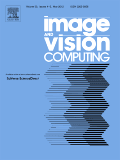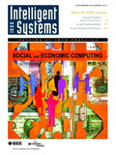
CAAI Transactions on Intelligence Technology
Scope & Guideline
Fostering Global Dialogue on Intelligence Technology
Introduction
Aims and Scopes
- Artificial Intelligence and Machine Learning:
The journal extensively covers research in AI and machine learning, exploring novel algorithms, frameworks, and applications in various fields such as healthcare, robotics, and image processing. - Computer Vision and Image Processing:
A significant focus is placed on computer vision techniques including image recognition, segmentation, and enhancement, with applications in medical imaging, autonomous vehicles, and surveillance. - Data Science and Analytics:
The journal includes studies on data analysis techniques, predictive modeling, and the integration of AI in data-driven decision-making across sectors. - Robotics and Human-Machine Interaction:
Research on intelligent robotic systems, their control mechanisms, and interaction with humans, emphasizing applications in healthcare, manufacturing, and service industries. - Secure and Trustworthy AI:
The journal addresses the challenges of data privacy, security, and ethical implications of AI technologies, promoting methodologies for developing trustworthy AI systems.
Trending and Emerging
- Deep Learning and Neural Networks:
There is a significant uptick in research related to deep learning architectures, including convolutional neural networks (CNNs) and transformer models, particularly in areas like image and speech recognition. - Healthcare Applications of AI:
The journal has seen increased submissions focusing on AI applications in healthcare, such as medical image analysis, predictive diagnostics, and personalized medicine, highlighting the critical role of AI in improving health outcomes. - Explainable AI and Ethical Considerations:
Emerging themes include the development of explainable AI systems that provide transparency in decision-making processes, addressing ethical concerns surrounding AI technologies. - AI in IoT and Smart Systems:
Research on the integration of AI with Internet of Things (IoT) devices is on the rise, focusing on smart healthcare, intelligent transportation, and automation in various sectors. - Reinforcement Learning Applications:
There is growing interest in reinforcement learning, particularly in applications related to robotics and autonomous systems, where decision-making in dynamic environments is critical.
Declining or Waning
- Traditional Machine Learning Techniques:
There has been a noticeable decrease in papers focused on classical machine learning approaches, as the field shifts towards more advanced deep learning and AI methodologies. - Basic Image Processing Techniques:
The publication of papers centered around basic image processing methods has dwindled, with a growing emphasis on complex deep learning frameworks that offer superior performance. - Theoretical AI Models Without Practical Applications:
Research that is heavily theoretical without direct applications or implementations has seen a reduction, as the journal increasingly favors studies that demonstrate practical outcomes and real-world applications.
Similar Journals

IMAGE AND VISION COMPUTING
Driving innovation in the realm of visual technology.Image and Vision Computing, published by Elsevier, serves as a leading international journal focused on the dynamic fields of computer vision, pattern recognition, and signal processing. With its esteemed Q1 category rankings in these areas and an impressive standing in Scopus metrics, where it ranks 19th in Computer Vision and 23rd in Signal Processing, this journal has firmly positioned itself at the forefront of academic research and innovation. Established in 1983, it continues to publish cutting-edge research that drives advancements in technology and applications across various domains. The journal is committed to disseminating high-quality, peer-reviewed articles that address significant challenges and propose novel solutions, making it an essential resource for researchers, practitioners, and students alike. While not an open access journal, Image and Vision Computing offers a wealth of valuable insights into the ever-evolving landscape of visual computing technologies.

IEEE INTELLIGENT SYSTEMS
Advancing Knowledge in Intelligent SystemsIEEE Intelligent Systems, published by the renowned IEEE Computer Society, stands at the forefront of research in the fields of Artificial Intelligence and Computer Networks and Communications. With an impressive Q1 ranking in both categories as of 2023 and Scopus rankings placing it in the top 5% of its field, this journal not only showcases cutting-edge scientific advancements but also serves as a vital resource for practitioners, academics, and students seeking to deepen their understanding and application of intelligent systems. The journal covers a broad range of topics including machine learning, data mining, and system architectures, reflecting its commitment to addressing contemporary challenges and innovations in technology. Although it does not offer open access, the journal's research contributions are invaluable, ensuring that its readership remains engaged with the latest findings and applications in a rapidly evolving field. For those interested in submitting high-quality research or staying updated on the latest developments, IEEE Intelligent Systems represents an essential hub of knowledge.

COMPUTING AND INFORMATICS
Unveiling Cutting-Edge Research in ComputingCOMPUTING AND INFORMATICS is a peer-reviewed academic journal published by the Slovak Academy of Sciences Institute of Informatics, focusing on various aspects of computer science and its applications. Established in 2000, this journal has garnered attention for its emphasis on computational theory, computer networks, software development, and hardware architecture, placing it in the competitive landscape of academic publishing with currently a Q3 ranking in the fields of Computational Theory and Mathematics, and Computer Networks and Communications, as well as Q4 ranking in Software and Hardware and Architecture categories. Readers can access its findings through Open Access, promoting wider dissemination of innovative research. With an ISSN of 1335-9150 and an E-ISSN of 1335-9150, the journal serves as a vital platform for showcasing cutting-edge research in the field, aiming to bridge theoretical foundations with practical applications. This journal not only contributes to the academic community but also supports the ongoing advancements in technology and informatics, making it an important resource for researchers, professionals, and students keen on staying at the forefront of the field.

Computational Visual Media
Exploring the future of AI and design.Computational Visual Media, published by TSINGHUA UNIVERSITY PRESS, is a premier open access journal dedicated to advancing the fields of Artificial Intelligence, Computer Graphics and Computer-Aided Design, and Computer Vision and Pattern Recognition. Since its inception in 2015, it has established a robust position within the academic community, consistently achieving Q1 rankings across its categories as of 2023. With exceptional Scopus rankings, including a remarkable percentile standing in the top 10% globally, the journal serves as a vital resource for researchers, professionals, and students eager to explore cutting-edge methodologies and technologies in computational visual media. The journal’s open access format enhances accessibility, fostering global collaboration and dissemination of knowledge, making it an indispensable platform for those at the forefront of innovation in these dynamic fields. The journal is headquartered in Beijing, China, and aims to publish high-quality research that not only contributes to theoretical advancements but also addresses practical challenges within computational visual technologies.

International Journal of Biometrics
Unlocking the Potential of Biometric ScienceInternational Journal of Biometrics is a distinguished platform dedicated to advancing research in the multifaceted areas of biometrics and its applications across various disciplines. Published by InderScience Enterprises Ltd in the United Kingdom, this journal serves as a vital resource for researchers, professionals, and students involved in applied mathematics, computer science, and electrical engineering. With an ISSN of 1755-8301 and an E-ISSN of 1755-831X, the journal provides a curated collection of innovative studies and reviews that contribute to understanding and improving biometric technologies. As of 2023, it holds a Q4 ranking across several relevant categories, reflecting its commitment to fostering knowledge in an emerging field. Though currently non-open access, it remains accessible to academic institutions and professionals, aiming to bridge gaps in biometrics research and practice. The journal covers a wide scope of topics, notifying readers about essential developments in image processing, pattern recognition, and electronic engineering applications, making it an indispensable resource for anyone interested in the dynamic field of biometrics.

IMAGING SCIENCE JOURNAL
Navigating the Evolving Landscape of Imaging TechnologiesImaging Science Journal, published by Taylor & Francis Ltd, serves as a vital resource for researchers and professionals in the fields of computer vision, pattern recognition, and media technology. With an ISSN of 1368-2199 and an E-ISSN of 1743-131X, this journal has been fostering scholarly dialogue since its inception in 1997, with a converged content offering extending through 2024. Its categorization in Quartile 4 in Computer Vision and Pattern Recognition and Quartile 3 in Media Technology highlights its relevance and contributions to emerging trends in these domains. Although it ranks 36th in the Engineering - Media Technology category and 96th in Computer Science - Computer Vision and Pattern Recognition, its innovative research and insights continue to attract the attention of scholars dedicated to advancing knowledge at the intersection of imaging technologies. Offering versatile access options, this journal is essential for students, researchers, and professionals aiming to stay informed and engaged in the rapidly evolving landscape of imaging science.

PeerJ Computer Science
Fostering Collaboration in Cutting-Edge Computer SciencePeerJ Computer Science is a leading open access journal published by PEERJ INC, dedicated to the field of computer science. Since its inception in 2015, it has made significant strides in promoting scholarly communication and accessibility to cutting-edge research. With an impressive impact factor reflected by a Q1 ranking in the Computer Science (miscellaneous) category and a Scopus rank of 51 out of 232, this journal stands at the forefront of its field. The journal's open access model ensures that groundbreaking findings are readily available to researchers, professionals, and students alike, fostering collaboration and innovation in the ever-evolving landscape of computer science. As it continues to publish until 2024 and beyond, PeerJ Computer Science remains an essential resource for those seeking to stay ahead in their research and practice.

Computer Methods and Programs in Biomedicine
Exploring Cutting-Edge Methods in Biomedical Computing.Computer Methods and Programs in Biomedicine, published by ELSEVIER IRELAND LTD, is a leading journal at the intersection of computer science and biomedical research. With an impressive impact factor evidenced by its Q1 rankings in multiple categories—Computer Science Applications, Health Informatics, and Software—this journal ranks highly among peer publications, showcasing its significance in advancing interdisciplinary research. Covering a wide array of topics since its inception in 1985, it is particularly crucial for those invested in the innovation of computational methods applied to the biomedical field. The journal has established a strong reputation, with Scopus rankings placing it in the top percentiles across its relevant sectors, including the 14th position out of 138 in Health Informatics. Researchers, practitioners, and students looking to explore current trends, methodologies, and advancements in biomedical applications of computer science will find this journal an invaluable resource.

International Journal of Image and Graphics
Exploring the Intersection of Art and TechnologyInternational Journal of Image and Graphics, published by World Scientific Publishing Co. Pte Ltd, serves as an essential platform for scholars and practitioners in the realms of Computer Graphics, Computer-Aided Design, and Computer Vision and Pattern Recognition. Established in 2001 and based in Singapore, this journal has become increasingly influential, with a reputation reflected in its Q3 and Q4 rankings across key categories in Scopus, highlighting its growing impact in the academic community. Open access options remain limited; however, the journal's commitment to disseminating high-quality research allows for a rich exchange of ideas among professionals and students alike. As the 2023 metrics indicate, contributions to the journal not only enhance individual academic portfolios but also promote advancements in image processing, fostering innovation and growth within the discipline until at least 2024. It is thus a vital resource for anyone looking to deepen their knowledge and understanding of contemporary trends and technologies in image processing and related fields.

JOURNAL OF COMPUTER SCIENCE AND TECHNOLOGY
Unveiling New Horizons in Computer ScienceJOURNAL OF COMPUTER SCIENCE AND TECHNOLOGY, published by Springer Singapore Pte Ltd, is a pivotal platform in the rapidly evolving realms of computer science and technology. With an ISSN of 1000-9000 and an E-ISSN of 1860-4749, this journal encompasses a diverse array of topics including computational theory, hardware and architecture, software engineering, and applications of computer science. Spanning over three decades from 1986 to 2024, it boasts an impressive standing within academic circles, ranking in the Q2 quartile across several key categories and achieving notable placement in Scopus metrics. Although this journal operates under a subscription-based model, it remains a crucial resource for researchers, professionals, and students seeking to advance their knowledge and contribute to discussions in computer science. The JOURNAL OF COMPUTER SCIENCE AND TECHNOLOGY is committed to fostering innovation and scholarly communication in the field, encouraging submissions that contribute substantive advancements in theory and application.